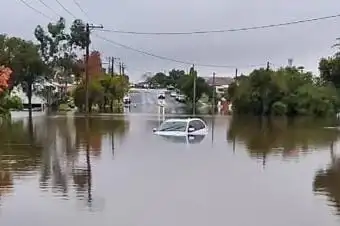At least 23 people have lost their lives in Mexico following a week of relentless rains that caused widespread flooding and destruction across the country. According to civil defence authorities, torrential downpours were recorded in 31 of Mexico’s 32 states by Friday, October 10, 2025, leaving thousands affected and key infrastructure damaged.
The eastern state of Veracruz, central states of Querétaro and Hidalgo, and the north-central state of San Luis Potosí were among the hardest hit. In Hidalgo, 16 fatalities were reported, with over 1,000 homes damaged by rising waters and landslides. Puebla reported five deaths and at least 11 missing persons, while a child in Veracruz and a police officer in Querétaro also lost their lives amid the disaster.
Laura Velázquez, Mexico’s national coordinator for civil defence, confirmed that the rains had triggered multiple landslides, overflowing rivers, and road collapses, severely disrupting transportation and communication in affected areas. Emergency teams have been deployed to rescue stranded residents and restore essential services.
President Claudia Sheinbaum convened an emergency meeting with local officials and cabinet members to coordinate the national response. “We are working to support the population, reopen roads, and get power back on,” she said, emphasizing the government’s commitment to swift recovery efforts.
The Mexican military has mobilized over 5,400 troops, equipped with rescue gear and vehicles, to assist with aid distribution and evacuations. Temporary shelters have also been set up for residents displaced from their homes.
The disaster coincides with Tropical Storm Raymond, which continues to hover off Mexico’s Pacific coast. The storm has already caused damage in Chiapas, Guerrero, Oaxaca, and Michoacán, and is expected to make landfall in southern Baja California over the weekend, according to the US National Hurricane Center.
Mexico has experienced record rainfall in 2025, including unprecedented levels in the capital, Mexico City, signaling a worrying trend of intensifying weather patterns linked to climate change.

